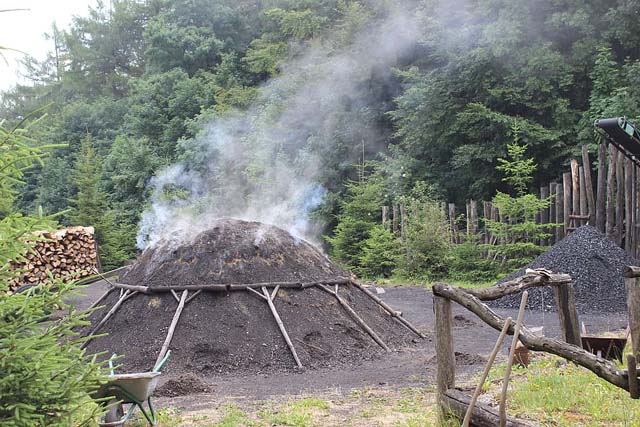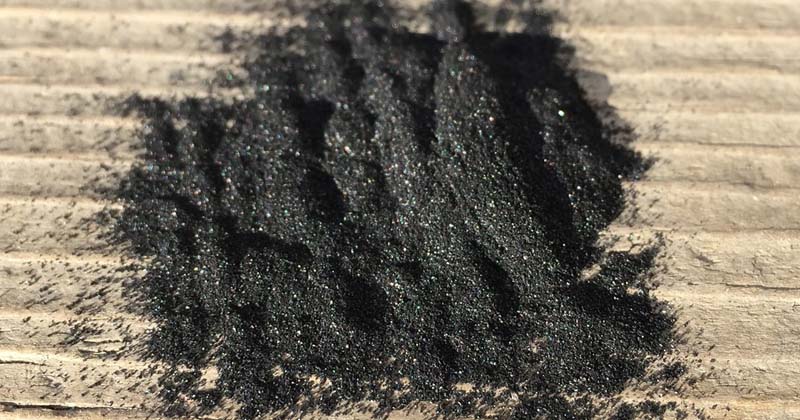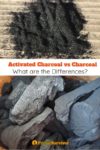Activated charcoal is one of the most useful products to have around your home “just in case.”
It especially has a lot of first aid uses, such as for treating stomach bugs and poisoning.
It can even be used to make a DIY water filter or face mask for removing chemicals. But, before you grab your BBQ charcoal, know that activated charcoal and normal charcoal are not the same.
Here’s the difference between the two and whether you can use charcoal instead of activated charcoal.
Charcoal vs Activated Charcoal
The important differences between charcoal and activated charcoal are that activated charcoal is more porous, has a higher surface area, and is purer than regular charcoal.
Why Porosity and Surface Area Matter
Activated charcoal works for things like poisoning and water filters because it is an adsorbent. This means it binds to other substances. For example, in water filters, the activated charcoal will bind to chemicals in the water passing through it. The chemicals get trapped by the AC so only clean (or at least cleaner) water passes through.
The more porous AC is and the higher surface area it has, the better it will be able to grab onto toxins and other harmful substances. So, while regular charcoal is also absorbent and can be broken down to have a higher surface area, it doesn’t compare to that of activated charcoal.
Typically activated charcoal has a surface area of 800 to 1,200m2 per gram. To put this in perspective, just 50 grams of activated charcoal has the same surface area as 7 football fields.
The surface area can differ drastically depending on how the activated charcoal was made too. “Superactivated” charcoal can have a surface area of 2,800 to 3,500 m2/g – or a surface area of 17+ football fields per 50 grams.
Purity
Another crucial difference is that regular BBQ charcoal isn’t as pure as activated charcoal. Those lumps of charcoal still contain a lot of wood smoke deep in their pores. By contrast, the pores are flushed out in the process of making activated charcoal.
Some charcoal lumps are also made with chemicals, binders, or have additives (such as to make them self-igniting). These could be harmful to ingest. Kind of ironic if you are using charcoal to treat poisoning or for making a water filter.
Can You Use Charcoal Instead of Activated Charcoal?
In theory, yes, you can use charcoal instead of activated charcoal. However, regular charcoal won’t be anywhere near as effective. You also could expose yourself to chemical additives or impurities.
The bottom line? You could use charcoal instead of activated charcoal if it were a SHTF situation and you had nothing else. But, for everyday use and preparedness, stick to activated charcoal.

This Charcoal powder comes in a resealable bag and is a good value for the amount you get.
Check On Amazon
What Is Charcoal?
Charcoal is made by burning an organic material (such as wood or coconut shells) with little or no air. Historically, this was done by burning wood in clay enclosures or by burning it in earthen pits or mounds with the wood covered by soil. Today, charcoal is usually made in very large concrete or steel kilns.

Burning the material in an oxygen-less environment removes water, methane, hydrogen, tar, and other volatile compounds. All that remains is a dark char which is almost pure carbon. This is what we know as charcoal.
There are a lot of benefits to burning charcoal instead of wood. The main one is that charcoal can reach much higher temperatures than wood and burns more steadily. Compared to burning wood, there is also less smoke, soot, and dangerous vapors and also virtually no steam with charcoal.
If it weren’t for charcoal, our ancestors wouldn’t have been able to get iron ore hot enough to make steel. Human civilization would look very different!
What Is Activated Charcoal?

Activated charcoal is made by taking regular charcoal and further processing it. This is usually done with chemicals but hot gas can also be used. After “activation,” the charcoal is much more porous and has a large surface area.
It is possible to make activated charcoal at home.




You left out all the same data for charcoal that you provided for activated carbon like surface area, sources of the charcoal, etc.
Hi, so I need to build a terrarium, and what I always find in the internet is to use activated charcoal, but its hard to come by in our place and all I have is regular charcoal, can I use it as a substitute instead of activated charcoal?
Generally no: if it was a true emergency situation, then you theoretically could use regular charcoal. But they often contain nasty chemicals and byproducts. Plus regular charcoal won’t do nearly as good of a job at absorbing impurities. I’d get real activated charcoal. It’s cheaper if you buy in bulk.
Hi,
Thanks for posting this article.
I have a question, not sure if you’re able to advise. I was told to use regular charcoal for wardrobes to absorb moisture and odour.
So I bought lump charcoal. Could u advise if it’s reusable? Like if I sun it, will the moisture be taken out?
If yes, how often to sun it? Like is it every 3-4mths?
If not, how often do I need to replace it in the wardrobes? Like every 6mths?
Just need to understand how to best treat the lump charcoal that is already in my wardrobes to take care of mould and odour!
Thank you!
Would greatly appreciate a reply!
I’ve also heard that you can use charcoal briquettes to remove odors and control moisture, but I’ve never tried it. The charcoal shouldn’t have any additives, like anythign which makes it easier to light or flavors. If you take the charcoal outside to dry out, it *should* be reusable. However, some of the odors that it trapped are going to stay inside the charcoal. I would discard it as soon as it starts getting stinky. Or just use baking soda. 🙂
TYPO: will and won’t. “regular charcoal will be anywhere near as effective.” Great article otherwise. Thanks for sharing
Thanks for catching that. It’s been updated. 🙂